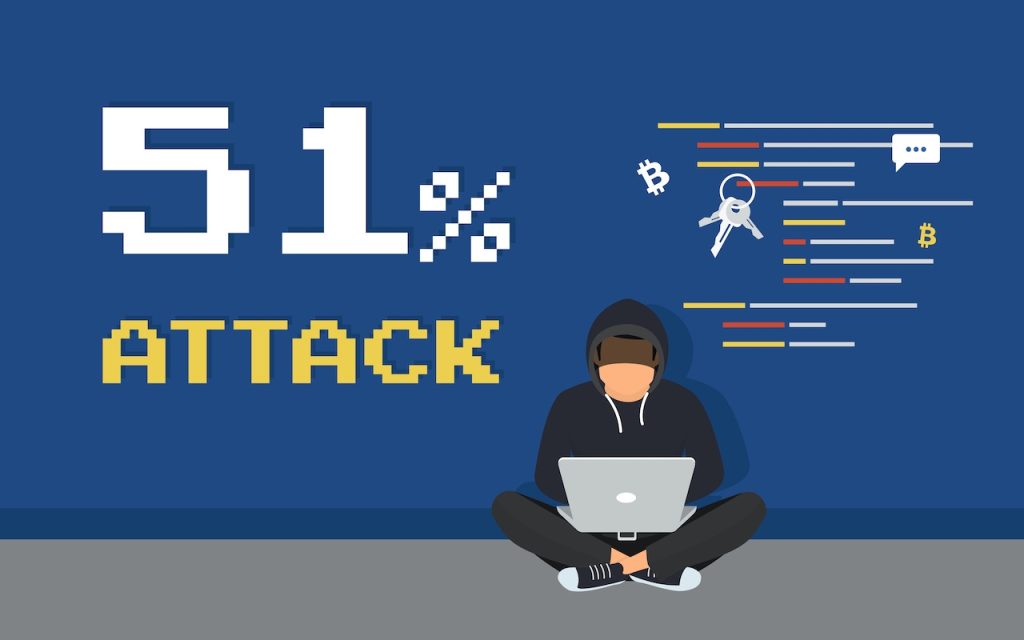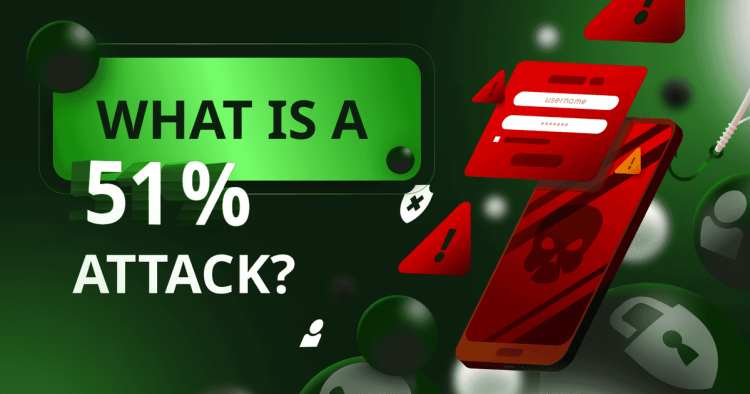Introduction
A 51% attack represents one of the most well-known and dangerous threats to blockchain security. It occurs when a single entity or group gains control of more than half of the total computational power (in proof-of-work systems) or total stake (in proof-of-stake systems) of a blockchain network. With majority control, an attacker can manipulate the consensus process, reverse transactions, and even execute double-spending attacks.
While these attacks are theoretically feasible, particularly on smaller blockchains, there are numerous countermeasures and architectural strategies that can significantly reduce the risk or mitigate the impact of such attacks. This article examines what a 51% attack entails and explores the most effective defensive measures that blockchain networks can adopt.
What Is a 51% Attack?
In a 51% attack, the attacker has the power to:
- Prevent new transactions from gaining confirmations, halting payments.
- Reverse transactions that were recently confirmed, enabling double-spending.
- Exclude or reorder transactions within blocks.
However, a 51% attacker cannot:
- Steal coins from other users.
- Alter the underlying consensus rules.
- Create new tokens outside of what the protocol allows.
The likelihood and impact of such an attack depend on the blockchain’s size, consensus algorithm, and decentralization level.
Defensive Strategies Against 51% Attacks
1. Increase Network Hashrate or Stake Decentralization
A highly decentralized network is less vulnerable because no single entity controls a majority of power.
- In proof-of-work systems, encouraging more miners, particularly with geographic and hardware diversity, can prevent hashpower centralization.
- In proof-of-stake systems, designing incentives so that no validator or delegation pool accumulates excessive stake is crucial.
Encouraging user participation, lowering technical barriers to node operation, and using delegations wisely are vital to maintaining a wide distribution of power.
2. Implement Checkpoints
Checkpointing refers to setting a hard-coded or dynamically agreed-upon block height beyond which the blockchain cannot be reorganized.
There are two types:
- Static checkpoints: Manually inserted by developers in the source code.
- Dynamic checkpoints: Automatically agreed upon by a majority of full nodes.
Checkpoints help mitigate the impact of deep chain reorganizations, which are a key tool in 51% attacks. However, they introduce a slight degree of centralization if used manually.
3. Use Finality Gadgets
Finality mechanisms ensure that once a block reaches a certain number of confirmations, it becomes irreversible. These are often layered on top of the base consensus algorithm.
Examples:
- Ethereum 2.0’s use of Casper FFG (Finality Gadget).
- Tendermint and other Byzantine Fault Tolerant (BFT) consensus systems.
Finality reduces the incentive for chain reorganizations, thus deterring double-spending attempts.
4. Economic Penalties and Slashing
In proof-of-stake blockchains, slashing is a critical mechanism. If a validator acts maliciously—such as trying to finalize conflicting blocks—their stake is partially or fully confiscated.
Slashing acts as a powerful economic deterrent. The higher the value of the stake required to attack the network, the greater the financial risk to the attacker.
Some networks also include mechanisms to:
- Freeze malicious validators.
- Alert other validators and users.
- Automatically reorganize validators based on behavior.
5. Use Hybrid Consensus Models
Combining multiple consensus mechanisms can strengthen resistance to 51% attacks. For example:
- Proof-of-Work + Proof-of-Stake: A hybrid model where both mining power and stake are required to validate blocks.
- Delegated Proof-of-Stake + Byzantine Agreement: Used in some enterprise or consortium blockchains.
Hybrid models increase the complexity and cost of executing an attack.
6. Monitor and React to Network Anomalies
Blockchain networks can employ real-time monitoring systems to detect signs of an ongoing or imminent 51% attack, such as:
- Sudden spikes in hashrate or stake concentration.
- Multiple chain reorganizations in a short time.
- Unusual validator behavior.
Response mechanisms might include temporarily halting block production, triggering emergency governance actions, or adjusting protocol parameters.
7. Design Economic Infeasibility
For large, widely used networks like Bitcoin or Ethereum, conducting a 51% attack would require billions of dollars in hardware, energy, or staked assets—making the attack economically irrational.
Security-by-cost design principles aim to:
- Increase the cost of attack (e.g., expensive hardware or minimum stake thresholds).
- Reduce the benefit of attack (e.g., through finality or penalties).
- Limit off-chain arbitrage and value extraction opportunities.

8. Community and Governance Responses
If an attack occurs, a blockchain community can coordinate a response. This might include:
- Forking the chain to reverse malicious activity.
- Releasing emergency software updates.
- Reassessing consensus rules.
While not ideal, social coordination provides an additional layer of defense, particularly in blockchains with active development communities.
Case Studies of 51% Attacks
Several blockchains have suffered 51% attacks in recent years:
- Ethereum Classic: Repeated attacks in 2019 and 2020 resulted in multi-million dollar losses.
- Bitcoin Gold: Attacked in 2018 and again in 2020.
- Vertcoin: Subject to multiple reorganizations due to low network hashrate.
These cases highlight the importance of proactive defenses, particularly for smaller blockchains with limited mining or staking power.
Conclusion
A 51% attack remains one of the most feared threats in blockchain security, especially for networks with low hashrate or concentrated validator sets. However, a combination of decentralization, protocol-level safeguards, cryptoeconomic incentives, real-time monitoring, and community governance can make such attacks highly unlikely or ineffective.
Blockchain projects must actively assess their attack surface and implement multilayered defenses. As blockchain technology evolves, the focus must remain not only on decentralization and performance but also on long-term resilience against sophisticated adversaries.
















































